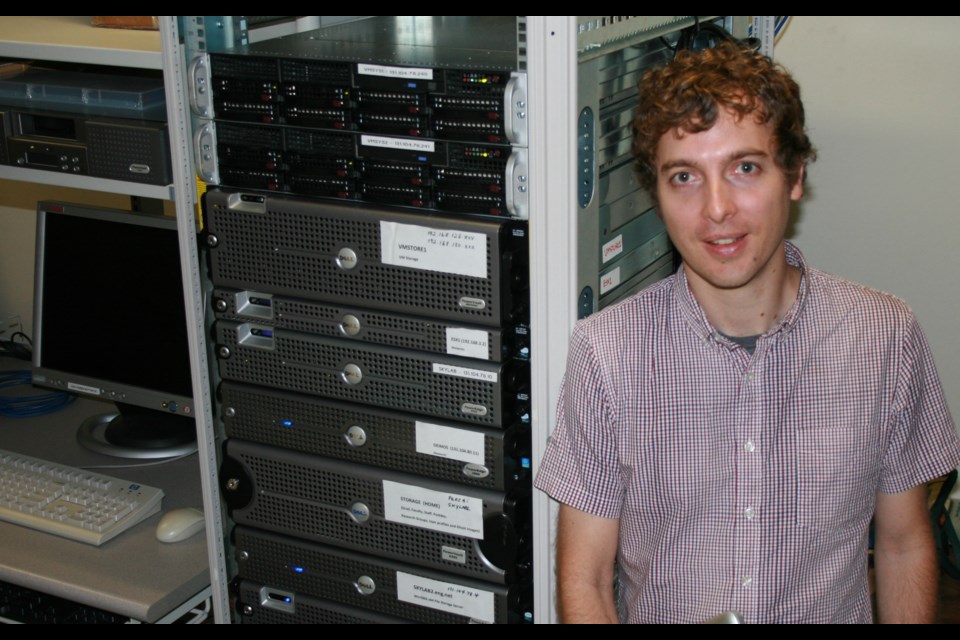With all the moving pictures captured by all the digital video cameras in the world, there is simply no time for a highly perceptive human being to watch those millions of hours of footage.
But highly perceptive digital technology could scan it in a fraction of the time, and be programmed to recognize the subtle differences in gesture and intent the human eye sees so well.
That is the premise behind University of Guelph engineering professor Graham Taylor’s research – to make digital video technology and computers more perceptive, to give them better eyes so that they can differentiate between a multitude of visual cues.
Human beings can recognize those cues often in the blink of eye. Taylor believes computer technology could reach similar heights of perception.
Taylor and his research partners have received enough federal cash to advance the development of machine vision technology. The Natural Sciences and Engineering Research Council (NSERC) announced this week a $550,000 grant that will fund the research for three years. Taylor said in an interview that the generous funding should be enough to determine if the technology is viable.
“This is more of a basic research grant, and it’s over a longer timeframe,” Taylor said. “So we have basically three years to accomplish what we’ve set out to do, and take pretty big risks.”
He said the research involves French research partners at INSA-Lyon and Pierre and Marie Curie University, and Greg Mori, a researcher at Simon Fraser University.
“What we’re essentially trying to do is get computers to see just like people do,” Taylor said. “The way that we’re doing that is we’re showing the computers video. What they could do is basically process the video and understand what is going on in it.”
As an example, he said there are surveillance camera in public spaces like hospitals and airports, with countless hours of footage that a person would never have the time to watch in its entirety.
“The idea is that computers process it very quickly and then the computer would understand what is going on in the video and give the important outputs to a person,” he explained.
People can differentiate between a couple dancing in a park and a couple fighting in one, but a computer can’t. Taylor’s research is aimed at giving computers that perception capacity. Computer vision systems are advancing to the point where they can distinguish between movements like jumping, running and walking.
Using information from digital video sensors, Taylor builds computer models that can take the data and turn it into software applications that have many uses.
“Some specific uses might be analyzing the cameras in public spaces and using those to design the spaces better – understanding how people move through buildings, like a shopping centre or through the downtown core,” he explained. “Or it might be a situation where it is in a hospital or a nursing home and it’s understanding whether someone has fallen or is experiencing other medical issues.”
With three years to work on it, and a number of different research teams behind it, Taylor is confident workable solutions will be found. And U of G officials are confident as well.
“Professor Taylor’s research on machine learning and computer technology will generate novel approaches to solve pressing problems in key sectors – food, agriculture, and environment – all areas where University of Guelph researchers also excel,” said Malcolm Campbell, vice-president (research), in a press release.
